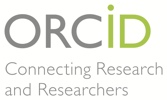You may curate your social media presence obsessively, keep a close eye on your online financial accounts, and be a major ninja master at eBay auction alerts. But how complete is your online research profile? A number of services allow you to establish a unique identifier for yourself and to apply that identifier to your publications, data sets, conference presentations, news articles, and research groups. In fact, some publishers are now making these unique identifiers a requirement. Here are a few places to get started with your profile.
![]()
The Web of Science ResearcherID has been around for quite some time and has long been used by the Web of Science citation databases to clear up any ambiguity about research authors. You may well already have a ResearcherID profile if you have published in academic journals. How to find out? Search the ResearcherID database for your name. If not, or if you want to add information to an existing profile, you can register at the ResearcherID site and update biographical information and research interests or add and link publications.
The result of your effort will be a unique identifier that will draw together your publication information in Web of Science and related resources, such as EndNote.


While ResearcherID was a proprietary identifier, developed specifically for the Thomson Reuters Web of Science citation tools, ORCID (Open Researcher and Contributor ID) is designed to be used across multiple platforms. ORCID IDs supply a persistent digital identifier for you and your work; sort of like a DOI for a person. With more than 1.8 million researcher accounts, ORCID is rapidly becoming an international standard and is in use even in humanities databases, including the MLA (Modern Language Association) Bibliography. Several publishers, including the American Geophysical Union (AGU), EMBO, IEEE ( the Institute of Electrical & Electronics Engineers), the Public Library of Science (PLOS) , and the Royal Society already require that authors supply an ORCID ID as part of the submissions process.
So – how can you get an ORCID ID? it’s easy and free. Navigate to the ORCID website to register and to read more about using your ORCID ID once you have created it. In Web of Science, you can link your ResearcherID and ORCID ID so that scholarly metrics and publications cluster together correctly.

For More Information
Want to know more about establishing your unique research profile? Check out our LibGuide or ask your subject librarian for more information.
